
How to Attract High-End Hospitality Projects as an Interior Designer
Summary
Breaking into high-end hospitality design is achievable with thoughtful steps. Start small with boutique projects to build your portfolio, spend time immersing yourself in inspiring hospitality spaces, and focus on networking with industry leaders at key events. Understand the unique challenges of hospitality design, including durability, safety, and brand identity. Align your aesthetic with the right brands and draw inspiration from industry icons like Kelly Wearstler and David Rockwell. With intentionality and creativity, you can elevate your design career to new heights.
Reflection Questions
- Which design elements from hospitality spaces you’ve visited have inspired you most, and how could you integrate those into your work?
- Are there specific hospitality brands or boutique properties that align with your aesthetic? What makes them resonate with you?
- How can you use your current portfolio to highlight your ability to create functional, high-traffic spaces that are also visually stunning?
Journal Prompt
Write about a memorable experience in a hotel, restaurant, or other hospitality space. Reflect on how the design impacted your stay—what worked, what didn’t, and how you would reimagine the space to elevate the guest experience. Use this reflection to identify ways to bring more storytelling and functionality into your own projects.
Great design is as evocative and emotional as it is practical, right? So imagine that you’re on vacation and you just walked into a stunning hotel lobby where every design element—from the opulent light fixtures to the perfectly curated seating arrangements—captivates you. Now imagine that space didn’t just exist but that it was your creation. Hospitality design offers a rare blend of artistry and impact that completely transforms how people experience a space (and a brand).
Securing high-end hospitality projects may seem like a lofty goal, but we promise that it’s one well within your reach. Whether you dream of crafting boutique hotel interiors that capture the oddball history of an underappreciated area or designing grand, iconic spaces that wow guests, read on. Through practical tips and a dash of inspiration from industry powerhouses, we’ll explore how you can elevate your interior design career and create unforgettable experiences. Let’s get into it!
Seven Steps to Getting High-End Hospitality Projects (What, Like It’s Hard?)
Step 1: Start Small, Dream Big
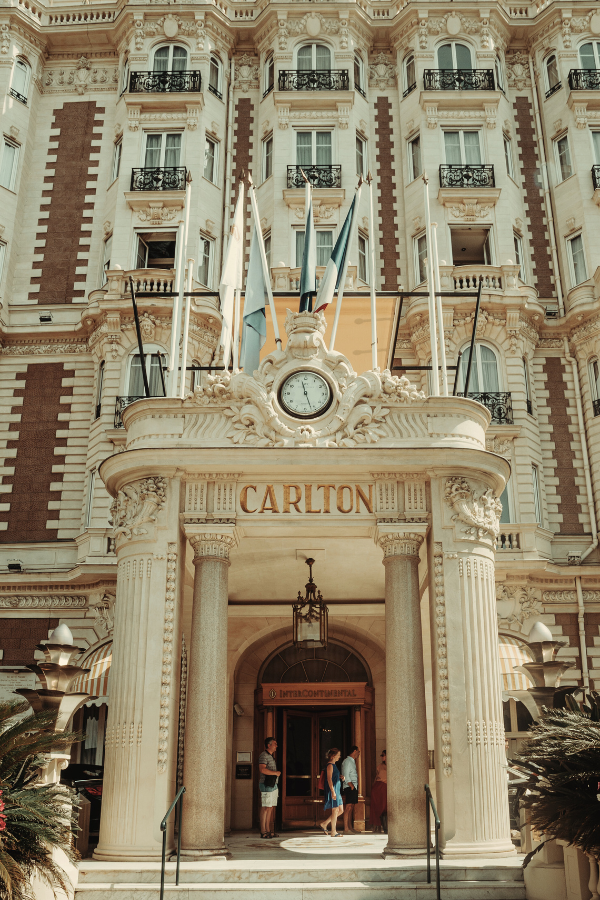
Breaking into high-end hospitality design doesn’t mean you need to start with the Four Seasons. Instead, think local. Boutique hotels, charming B&Bs, or even standout restaurants in your area are fantastic launching pads. These projects may not have sprawling budgets, but they offer opportunities to showcase your creativity and build a portfolio tailored to your interest in the hospitality niche.
Start by researching hidden gems in your city—places with character but needing a refresh. Reach out with a thoughtful pitch: highlight how your design could amplify their brand identity while enhancing the guest experience. For example, a cozy bed-and-breakfast might love the idea of using local materials or custom pieces that reflect its regional charm.
Big opportunities often stem from smaller beginnings, and boutique projects can serve as a gateway to larger, more luxurious endeavors. Remember, every breathtaking lobby or iconic hotel suite started as a designer’s bold first step.
Take It a Step Further with an Instagram Series
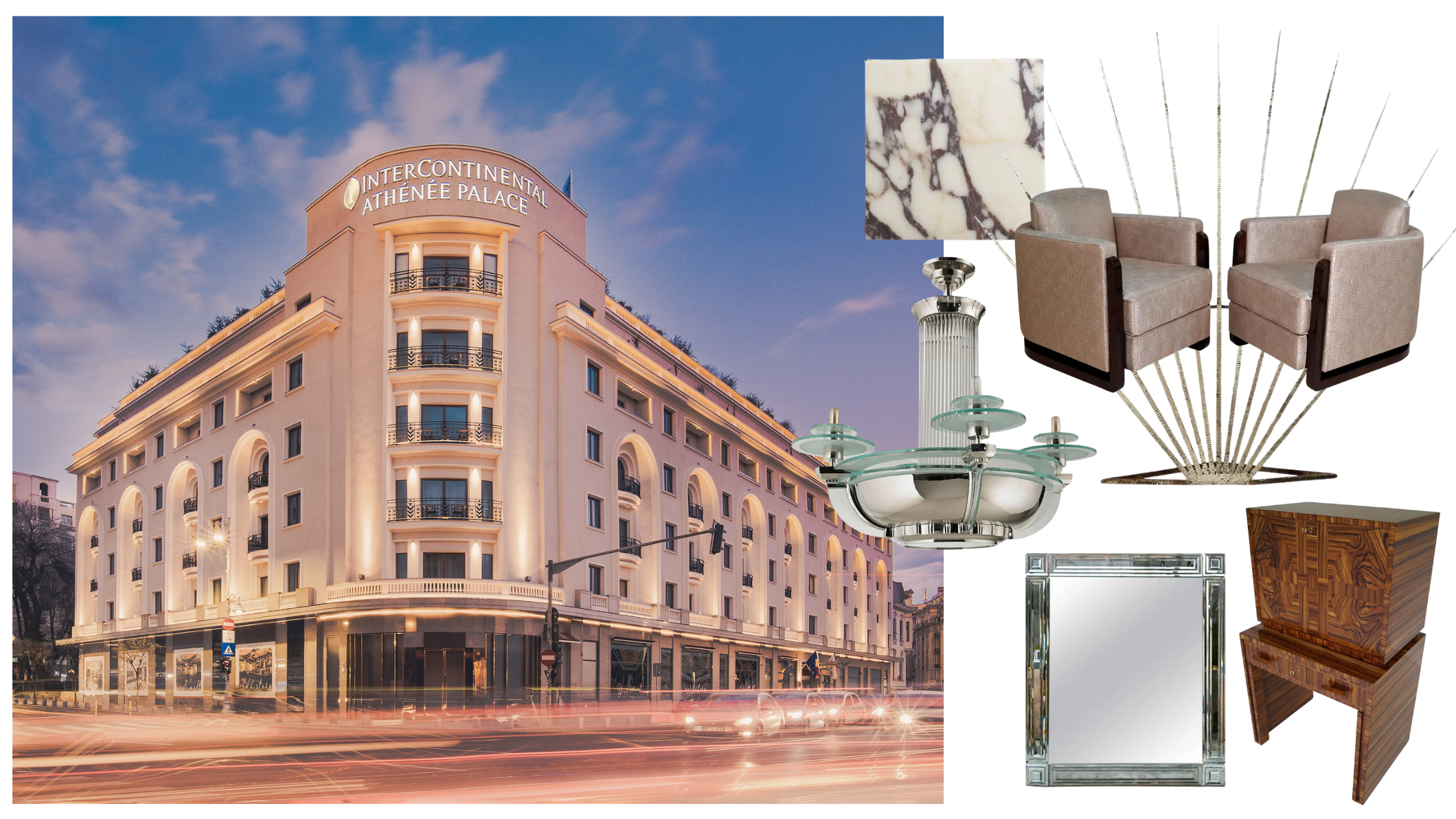
You probably associate social media with finished projects and fun BTS content, but you can also use Instagram to share your vision. Consider starting an Instagram series where you highlight iconic buildings and share what you’d do to bring out their unique character as a designer.
For example, what would you do with the Art Deco splendor of a historic theater? How would you transform a mid-century modern motel into a boutique hotel that guests rave about? Post a striking image (hopefully public domain) of the building alongside your design ideas.
Use captions to explain your thought process: “This grand 1920s façade deserves interiors that echo its history—think velvet textures, brass accents, and moody lighting to evoke the innovation and opulence of that age.” For example, take a look at the InterContinental Athénée Palace Bucharest on Episcopiei Street, designed by French architect Théophile Bradeau (pictured above). What would you change about the hotel’s interiors? How would you alter the objects we’ve selected to the right? Would you sub anything in or overhaul the entire thing?
Not only does this showcase your expertise and creativity, but it also gives potential clients a taste of how you think as a designer. You might even catch the attention of hospitality brands scouting for fresh talent. Plus, it’s a fun way to flex your imagination and connect with fellow design lovers.
Step 2: Spend a Night In Your Dream Project
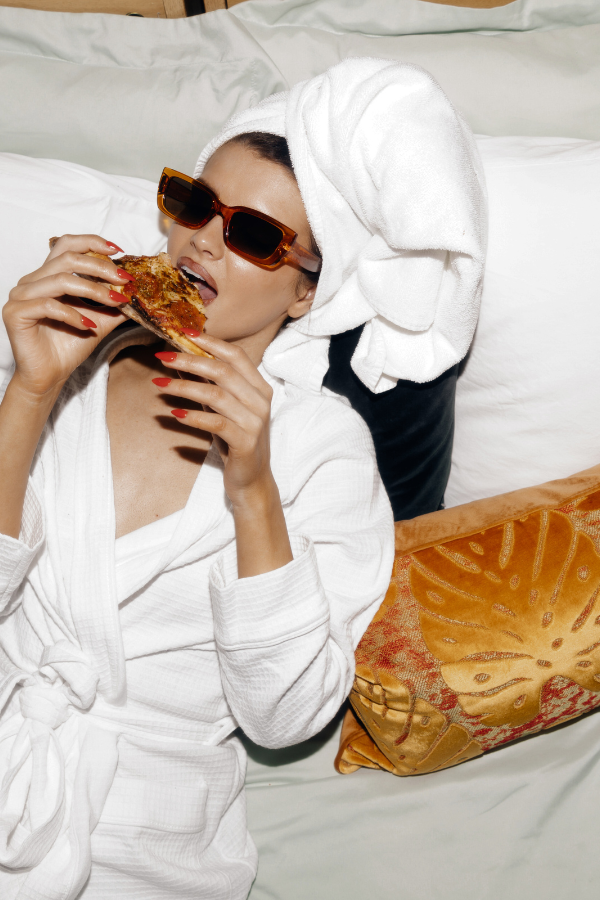
Here’s the thing: to design incredible hospitality spaces, you need to understand what makes them unforgettable. And what better way to do that than by living the experience yourself? Treat yourself to a night at a boutique hotel or luxury property that speaks to you. Maybe it’s a historic inn with moody interiors and vintage charm, or maybe a sleek urban retreat with minimalist lines and smart tech is more your vibe. Whatever it is, immerse yourself fully.
Take it all in: the way the lobby greets you (or doesn’t), the story the art on the walls tells, the feel of the bedding, and even the flow of traffic through public spaces. Be open to those moments where the hotel’s design makes you feel something. Then, pick out what misses the mark. Is the lighting too harsh for the vibe? Does the furniture placement invite lingering or rushing? Approach the experience like a detective searching for clues to crack the case of a perfect guest experience. It might seem silly, but we promise that you’ll have fun while gathering intel.
Take Notes Like the Designer You Are
Bring a notebook or use your phone to jot down observations as they come to you—like you’re on a site visit for your next project.
Ask yourself:
- Which specific design elements make this space stand out?
- How does the branding tie into the design?
- What would I do differently to make it even better?
When you’re back home, don’t let those ideas collect dust. Share them! Write a blog post, start a conversation on Instagram, or even sketch your own redesign of the space. By showing how you analyze and elevate existing designs, you’ll position yourself as a thoughtful, inspired designer ready for high-end projects. And as a bonus? You’ll build your creative confidence with every stay. Just be sure to avoid criticizing the original designer in ways that might come back to bite you.
Step 3: Build a Hospitality-Specific Portfolio
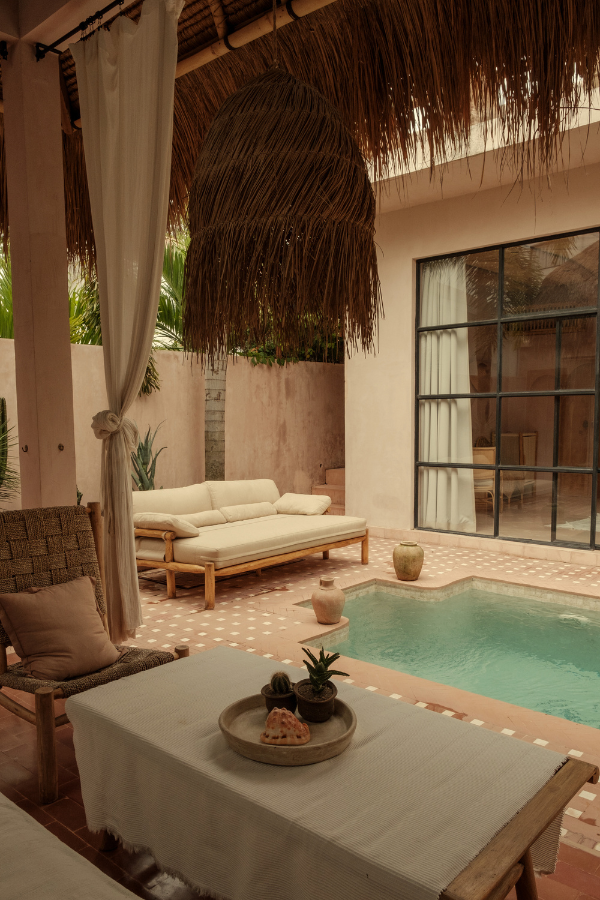
If you want to land hospitality projects, you need to show that you can design for hospitality. It sounds simple, but you must craft and curate your portfolio to highlight the skills and creativity that your ideal hospitality clients are looking for. Whether you’re starting fresh or refining what you already have, the key here is to showcase spaces that tell a story and create an experience in a way that resonates with your ICA.
Don’t worry if you don’t have hotel or restaurant projects in your portfolio yet. You can get creative here. If you’ve designed residential spaces, think about how those skills translate to hospitality. A cozy living room with a flow that encourages conversation? Perfect for a hotel lounge. A well-appointed guest bedroom with thoughtful lighting? That’s the bones of a boutique hotel suite.
Step 4: Be Seen, Be Heard, Be Hired by Networking Like a Pro
In most industries, who you know can open as many doors as what you know. High-end projects often come through referrals and trusted relationships, which is why networking is such a critical step in building your career. But don’t worry—you probably won’t have to make too much awkward small talk. It’s more important that you show up, be authentic, and genuinely connect with others in your industry.
Start with the major industry events. Trade shows like BDNY (Boutique Design New York) or Maison&Objet are goldmines for connecting with developers, procurement teams, and other designers in the hospitality space. For reference, BDNY 2025 will be from November 9th through 10th; registration opens in July. Maison&Objet is just around the corner from January 1st through 20th. Even if you can’t attend, keep tabs on Instagram!
Want to go deeper? Consider events like the International Hotel Investment Forum, where developers and hospitality executives gather to discuss future projects. By attending these events, you put yourself in the right rooms with the right people.
Fuel your creative fire & be a part of a supportive community that values how you love to live.
subscribe to our newsletter
*please check your Spam folder for the latest DesignDash Magazine issue immediately after subscription

Focus on Being Interested, Not Just Interesting
Here’s the secret to networking success: People love to feel heard. Instead of trying to impress everyone with your resume, focus on asking thoughtful questions about their projects, challenges, or inspirations. Not only will you learn a lot, but you’ll also leave a lasting impression as someone who is genuinely interested and engaged.
A simple conversation starter like, “What are you most excited about in your work right now?” can open the door to meaningful exchanges. By focusing on their experiences, you’ll build rapport and create the foundation for a real connection.
Actionable Tip: Turn Your Next Event into a Connection Magnet
Try this: pick one upcoming industry event and set a goal to connect with three people who inspire you. Prepare by creating a quick pitch about yourself, such as: “Hi, I’m [Your Name], an interior designer specializing in creating spaces that blend modern luxury with storytelling. I’d love to hear more about your projects!”
During the event, focus on quality over quantity. After meeting someone, follow up with a personalized email or LinkedIn message thanking them for their time. Mention something specific from your conversation, like a project or trend you discussed. This extra step can turn a quick handshake into a long-term connection.
Step 5: Understand Hospitality’s Unique Challenges
Designing for hospitality is totally different from taking on residential projects. Of course, you want to make a space look beautiful and feel impactful, but you also have to design an experience that holds up over time.
Think about it: a hotel lobby or restaurant isn’t like a living room that sees a handful of people each day (if that). These spaces are constantly buzzing with guests, so your designs need to handle the wear and tear while still looking incredible. You have to find that sweet spot between durability, functionality, and style.
Hospitality and commercial projects also typically involve a larger team of collaborators compared to residential projects. In addition to the client, you might work closely with architects, contractors, project managers, procurement specialists, branding consultants, and sometimes even chefs or hotel managers. Collaboration is a big part of the process.
Don’t Forget to Think About Durability, Safety, and Brand Identity
- Durability: Think long-lasting materials that can handle heavy wear and tear. Fabrics should be stain-resistant, furniture should be solidly built, and finishes should be scratch-proof. For example, velvet chairs might look luxurious, but if they’re in a bustling bar, they’d better be treated with performance-grade coatings.
- Safety Regulations: Sure, fire-rated fabrics, ADA compliance, and proper lighting levels are technical details but they’re also essentials. You absolutely have to understand these requirements if you’re going to successfully balance creative freedom with practical needs.
- Brand Identity: Hospitality spaces are an extension of a brand’s story. Every design element, from the color palette to the artwork, should reflect the brand’s personality. Your designs should speak their language.
Create a Hospitality Mood Board with Real Constraints
Picture a hotel lounge that’s Instagrammable but also built to withstand hundreds of guests every day. You might use plush seating in bold colors but select fabrics that resist spills and fading. Or consider incorporating lighting that creates a moody vibe while meeting brightness requirements for safety. Remember, you have to make it all look effortless (not like you’ve plastic-wrapped all the furniture for protection).
Challenge yourself: pick a dream hospitality project and create a mood board for it. Then, add a layer of real-world constraints—high traffic, tight budgets, or strict safety codes. How would you tweak your designs to meet these challenges without losing the creative spark?
Step 6: Research and Pitch Strategically
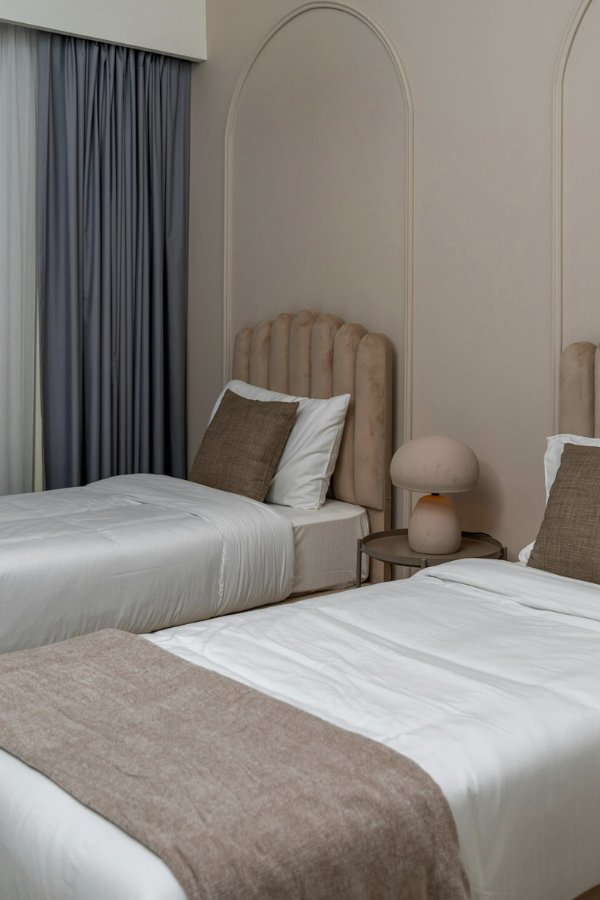
Not every hospitality brand fits your design style perfectly—and that’s okay. The key to landing high-end projects where everyone ends up happy is finding brands that align with your aesthetic and values.
How to Research Hospitality Brands
- Study their online presence—social media, website, and guest reviews. What mood and message do they convey?
- Visit their locations (if possible) or explore virtual tours. Note their existing design choices and branding.
- Identify what’s missing or could be elevated. Are the spaces functional but uninspired? Luxurious but lacking warmth?
Craft a Pitch That Lands
When pitching to a brand, show that you understand their identity and how your work complements it. For example: “Your brand’s focus on modern luxury with local influences inspired me to design a boutique spa concept that integrates regional materials and sleek silhouettes.” Tailor your portfolio to highlight projects or concepts that mirror their aesthetic.
Remember, if your style is bohemian and organic, you’re not pitching to a minimalist urban chain. Instead, target boutique hotels or eco-lodges that value sustainable design.
To start, create a list of five hospitality brands you’d love to work with. For each, write down three things you admire about their style or brand identity. Then, brainstorm one specific idea for how you could elevate their spaces. Use this list as a starting point for crafting personalized pitches that showcase your unique perspective.
Step 7: Follow the Heavy Hitters for Inspiration
Even the most celebrated hospitality designers had to start somewhere, and their success stories are packed with lessons for aspiring designers. By studying industry leaders like Kelly Wearstler, David Rockwell (Rockwell Group), and AvroKO, you can uncover strategies to refine your own approach to high-end hospitality projects.
What to Watch For
- Kelly Wearstler: Notice how she uses bold patterns and unconventional materials to create spaces brimming with personality. Her Instagram offers a peek into her process, from sourcing unique pieces to layering colors and textures.
- David Rockwell: The Rockwell Group excels at storytelling through design, whether it’s crafting immersive restaurants or theatrical hotel lobbies. Pay attention to how they blend functionality with drama.
- AvroKO: This group hascreating spaces that tell a cohesive narrative down to an art. Their restaurant designs, for example, often reflect the history or culture of their locations, down to the smallest detail.
Create a digital folder or Pinterest board to collect inspiration from these heavy hitters. Save Instagram posts, screenshots, or project photos that resonate with you. In the caption or file name, jot down what you love about each piece—whether it’s the color palette, material use, or the way it tells a story. Over time, this file will evolve into a valuable resource for sparking ideas and honing your unique style.
Final Thoughts: It’s Time to Take the Plunge!

Sure, there’s a bit of luck in landing high-end hospitality projects. But you also need to take all of those small, deliberate steps that add up to big opportunities. Start by building a portfolio that speaks to the industry, put yourself out there at events, and just be curious about what makes hospitality design unique. Be intentional about who you work with, find brands that align with your vision, and always focus on the experience you’re creating—not just for your clients but for their guests.
Credits for Objects in Featured Image:
- Selenova Postmodern Table Lamp with Glass Orb in Light Blue Glass & Perspex on 1stDibs
- 1960’s California Studio Walnut Sofa Bench on 1stDibs
- 1970’s Mid-Century Modern Brass Drum Dining Table Attributed To Brueton on 1stDibs
- Lawrence Peabody Wicker Lounge Chair for Craft Associates Furniture on 1stDibs
- Composition (1925) by Mainie Jellett








